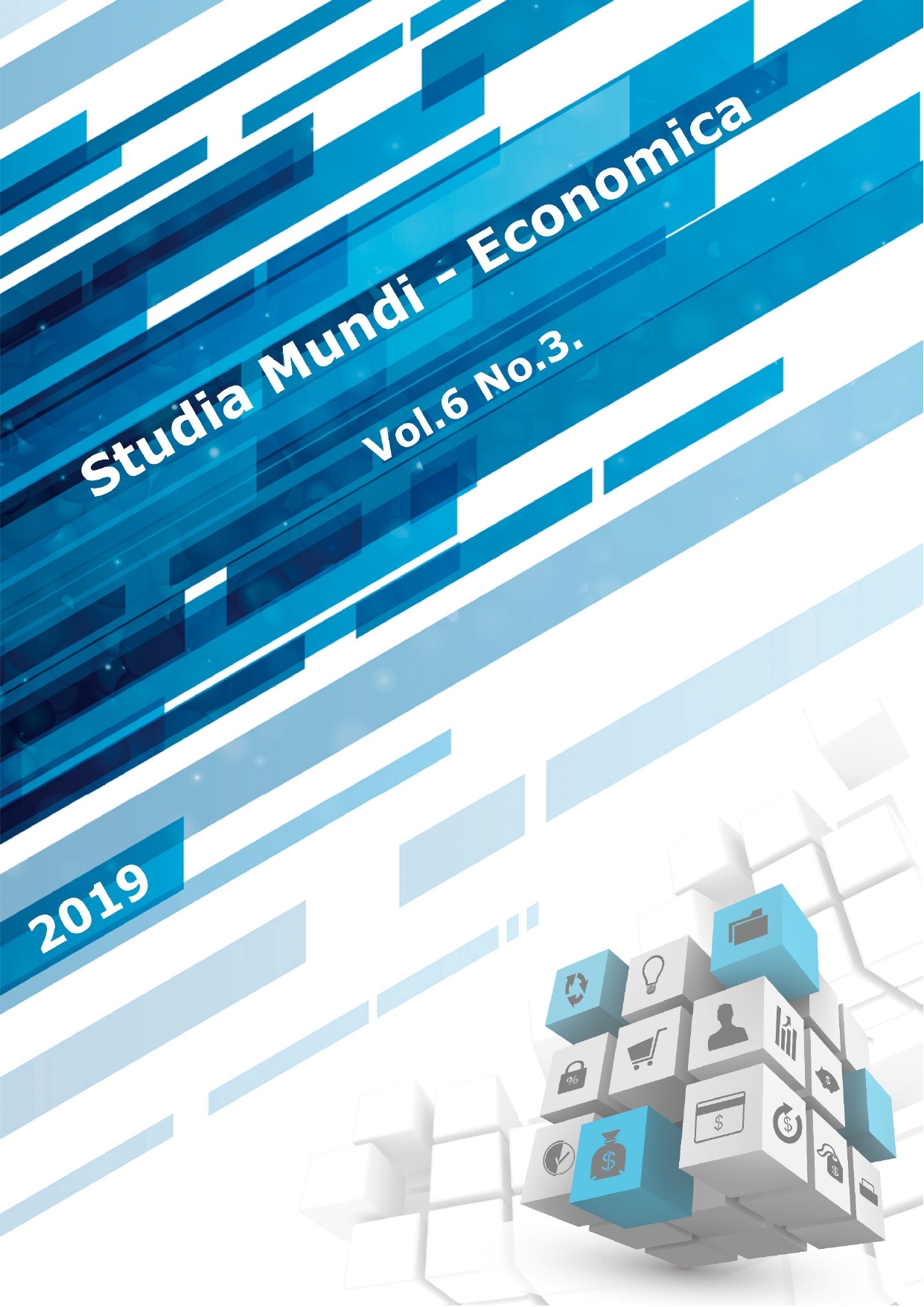The middle-income trap
DOI:
https://doi.org/10.18531/Studia.Mundi.2019.06.03.82-93Schlagwörter:
development, middle-income trapAbstract
The spectacular development of some emerging economies in East-Asia, including that of China, drew the general attention to the possibilities and difficulties to overcome underdevelopment. Two new narratives emerged in recent years for the explanation of successes and failures: the middle-income trap as a possible explication of difficulties and the developmental state as a variety of capitalism that may lead to success. In this paper we try to introduce the different concepts about the nature and characteristics of the middle-income trap and to elaborate how the developmental state can serve to escape the middle-income trap.
Literaturhinweise
Acemoglu, D. – Robinson, J. A. (2012): Why Nations fail? The origins of power, prosperity, and poverty. Crown Publishers, New York.
Agénor, P-R. - Canuto, O. – Jelenic, M. (2012): “Middle-Income Growth Traps,” World Bank Policy Research Working Paper 6210, World Bank, Washington D.C. See: http://documents.worldbank.org/curated/en/422121468155111398/pdf/NonAsciiFile Name0.pdf Downloaded: 12/01/2019
Benczes, I. (2019): A közepes jövedelem csapdája: régi dilemmák újragondolva. (Middle-income trap: old dilemmas rethought – in Hungarian) In. Szanyi – Török, 2019. pp. 108121.
Berend, I. T. (1996): Central and Eastern Europe, 1944-1993: Detour from the periphery to the periphery. CAMBRIDGE UNIVERSITY PRESS.
Cai, F. (2012): Is There a “Middle-income Trap”? Theories, Experiences and Relevance to China. China & World Economy Vol. 20, No. 1, pp. 49–61. DOI: https://doi.org/10.1111/j.1749-124X.2012.01272.x Downloaded: 27/09/2019
Eichengreen, B. – Park, D. - Shin, K. (2013): Growth Slowdowns Redux: New Evidence on the Middle-Income Trap. NBER Working Paper 18673. Source: https://www.nber.org/papers/w18673 Downloaded: 24/09/2019
Ghani, E, (2013): How to Avoid Middle Income Traps? World Bank, Let’s Talk Development. 13 August. See: http://blogs.worldbank.org/developmenttalk/how avoid-middle-income-traps Downloaded: 15/01/2019
Gill, I. - Kharas, H. (2007): An East Asian Renaissance: Ideas for Economic Growth, Washington D.C.: World Bank. See: http://siteresources. worldbank.org/INTEASTASIAPACIFIC/Resources/226262-1158536715202/ EA_Renaissance_full.pdf Downloaded: 12/04/2018
Gill, I. – Kharas, H. (2015): The Middle-Income Trap Turns Ten. Policy Research Working Paper 7403, World Bank Group, Washington D.C. See:http://documents.worldbank.org/curated/en/291521468179640202/ pdf/WPS7403.pdf Downloaded: 18/01/2019
Glawe, L. – Wagner, H. (2017): China Caught in the “Middle-Income Trap”? VoxChina, Nov 22. See: http://voxchina.org/show-3-55.html Downloaded: 27/09/2019
Larson, G. – Loayza, N. – Woolcock, M. (2016): The Middle-Income Trap. Myth or Reality? Research and Policy Briefs, No 1. World Bank Group. March. See: http://documents.worldbank.org/curated/en/ 965511468194956837/pdf/104230-BRI Policy-1.pdf Downloaded:12/04/2018
Muraközy, L. (2019): Japan. Korea és Kína: Útkövetés vagy útteremtés? (Japan, Korea and China: path creating or path dependence? – in Hungarian) In: Szanyi – Török, 2019. pp. 122-146.
Szanyi, M. – Török, Á. (editors, 2019) Trendek és töréspontok. (Trends and breakpoints – in Hungarian) Akadémiai Kiadó, Budapest. 277 pages
Szunomár, Á. (2019): Gazdasági csodák/gazdasági csapdák – kínai növekedési kilátások a japán és dél-koreai példa tükrében. (Economic miracles/economic traps – Chinese perspectives in the light of the Japanes and South-Korean examples – in Hungarian). In: Szanyi – Török, 2019)
Woo, W. Th. (2012): China meets the middle-income trap: the large potholes in the road to catching-up. Journal of Chinese Economic and Business Studies, Vol. 10, No. 4, November See: http://faculty.econ.ucdavis.edu/faculty/woo/Woo Articles%20from%202012/Woo.China Middle%20Income%20Trap.JCEBS%202012.pdf Downloaded: 27/09/2019
World Bank (2012): China 2030: Building a Modern, Harmonious, and Creative High Income Society. Washington, D.C. See: http://documents.worldbank.org/curated/en/781101468239669951/pdf/762990PUB0 china0Box374372B00PUBLIC0.pdf Downloaded: 15/01/2019.
World Bank (2018): The World Bank in Middle Income Countries. See: http://www.worldbank.org/en/country/mic/overview Downloaded: 15/01/2019
World Bank (2019): Middle-income countries taking greater share of global economy. Feb, 22. See: http://datatopics.worldbank.org/world-development indicators/stories/middle-income-countries-taking-greater-share-of-global economy.html Downloaded: 28/03/2019
Zhang, L. - Yi, H. - Luo, R. – Liu, Ch. (2012): The Human Capital Roots of the Middle Income Trap: The Case of China. Agricultural economics 44(1s) See: https://www.researchgate.net/publication/241751304_The_Human_Capital_Roots_o f_the_Middle_Income_Trap_The_Case_of_China Downloaded: 27/09/2019
Downloads
Veröffentlicht
Ausgabe
Rubrik
Lizenz
Copyright (c) 2019 György Csáki

Dieses Werk steht unter der Lizenz Creative Commons Namensnennung - Nicht-kommerziell - Keine Bearbeitungen 4.0 International.
A folyóirat Open Access (Gold). Cikkeire a Creative Commons 4.0 standard licenc alábbi típusa vonatkozik: CC-BY-NC-ND-4.0. Ennek értelmében a mű szabadon másolható, terjeszthető, bemutatható és előadható, azonban nem használható fel kereskedelmi célokra (NC), továbbá nem módosítható és nem készíthető belőle átdolgozás, származékos mű (ND). A licenc alapján a szerző vagy a jogosult által meghatározott módon fel kell tüntetni a szerző nevét és a szerzői mű címét (BY).






